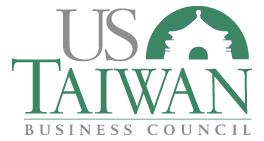On April 7, 2014, the U.S. House of Representatives passed H.R. 3470, the Taiwan Relations Act Affirmation and Naval Vessel Transfer Act of 2014. The legislation reaffirms the U.S. commitment to the Taiwan Relations Act and authorizes the sale of four Oliver Hazard Perry class frigates to Taiwan.
Press Release: Chairman Royce Applauds House Passage of Vital Taiwan Legislation
Video of Chairman Royce’s floor statement
Category: Resources
The U.S.-China Economic and Security Review Commission (USCC) was “created by the United States Congress in October 2000 with the legislative mandate to monitor, investigate, and submit to Congress an annual report on the national security implications of the bilateral trade and economic relationship between the United States and the People’s Republic of China, and to provide recommendations, where appropriate, to Congress for legislative and administrative action.”
On November 20, 2013, the USCC released its 2013 annual report to congress. Chapter 3, Section 2 of the report contains analysis on Taiwan, including discussions on cross-Strait relations, Taiwan’s role in the East and South China Sea disputes, and the status of U.S.-Taiwan relations. The report also contains extensive discussion on cross-Strait military and security issues.
Complete Report (PDF, 15MB)
Chapter 3, Section 2: Taiwan (PDF, 1.1MB)
Taiwan’s Ministry of National Defense has released its 2013 National Defense Report.
The English language version of the report will be released next week has now been released. Please check back at the see the “Taiwan Ministry of National Defense Reports” page – we will post it there when it becomes available.

Taiwan’s Military Under Siege:
A hazing scandal could destabilize the island’s relations with Beijing and Washington
August 12, 2013
Editorial by Rupert Hammond-Chambers
After several years of relative calm, Taiwan faces a new political crossroads. The tragic hazing death of army conscript Hung Chung-chiu has thrown the entire island into turmoil, and brought a coalition of civil society groups into collision with the Ministry of National Defense (MND). The way the ruling Kuomintang handles the scandal could destabilize relations with both the U.S. and China.
Corporal Hung, after receiving significant physical hazing, died in disciplinary confinement. His alleged transgression was the taking of a camera phone on to a military base, but many speculate that he was privy to corruption on the base. The video footage of his confinement was erased before it could be handed over to judicial authorities. Taiwan’s citizens view this case through the prism of a MND that acts with impunity, and the possibility of corruption on the base has further aggravated events. Pro-China forces have jumped on the opportunity to further undermine the MND and claim that the military is unworthy of robust support.
Washington has reason to worry about that backlash because the MND is the most important pro-American institution within the government. Some in the KMT want to impose financial restrictions on the MND to “starve the beast” in the aftermath of the hazing scandal. This would further weaken the already underfunded MND at a time when the military requires resources and support to transform itself into a modern, well-equipped, and all-volunteer force. Mr. Ma committed to turning a conscript army into an all-volunteer force, but has so far failed to come up with the budget. That means the military is unable to execute a policy directive from its civilian leadership. The MND is frustrated over what it views as a policy that by design leaves it highly vulnerable to political attack. Recent events have also left a vacuum at the top, with two ministers resigning in rapid succession.
The scandal could also destabilize relations with mainland China. The “deep blue” – i.e. pro-China – members of Mr. Ma’s Kuomintang party want him to open political and military talks with Beijing, which has been frustrated with the lack of movement in this area after it made economic overtures to the island. The deep blue camp wants to restrict funds to the MND, claiming that China’s ongoing military build-up is nothing to worry about and that the money should be spent elsewhere. This is a dangerous road, as there is no consensus in Taiwan on moving forward with cross-Strait talks. More than 90% of Taiwan’s citizens support the status quo of de facto independence, and forcing through such talks would further polarize Taiwan society. But without a credible defense, Taiwan could one day be forced to accept Beijing’s terms on reunification.
Chinese leaders must be watching these developments with positive glee. Taipei is doing more damage to its own ability to deter mainland coercion and military attack than any weapon the People’s Liberation Army could conceive. This damage represents a serious threat to Taiwan’s national security, and by extension to the national security of the U.S. and Japan.
Given the political atmosphere, the KMT’s prospects in next year’s five municipal elections are tenuous at best. If the opposition DPP wins three or more municipalities, they will likely have the momentum to regain the presidency in 2016. And even if the KMT hold on to the presidency, the incoming president will have limited maneuvering room in relations with China. Either way, tensions are set to rise as China sees its present strategy of engagement founder on the realities of Taiwan’s vibrant democracy.
The Obama administration’s decision rhetorically and substantively to omit Taiwan from its pivot to Asia telegraphs to China that Taiwan is no longer central to U.S. policy. By doing so, the U.S. is inviting Chinese adventurism when the present trajectory of Taiwan-China relations changes in the spring of 2016, if not sooner. China is currently playing nice, because it believes that Taiwan is being drawn inexorably into the fold. That explains why cross-Strait relations have been calm since Mr. Ma’s election in 2008. However, if Beijing starts to believe that time is no longer on its side, we can expect behavior more in line with China’s aggressiveness toward its other neighbors.
If the U.S. wants to avoid repeating Dean Acheson’s mistake of encouraging North Korea to invade the South in 1950, it needs to signal resolve to defend Taiwan. Taiwan’s democratic growing pains should not open the door for further Chinese coercion. The U.S. can recalibrate its Taiwan policy by restarting the arms sales to Taiwan that have been stalled for two years. The first step should be new F-16 C/D fighters, followed by assistance with the procurement of submarines. In addition, as Mr. Obama has instructed his cabinet officers to make at least one visit to Asia each year, Taiwan should be a port-of-call for all the economic officers making that trip. More senior uniformed officers need to visit Taiwan, both to improve communication at the highest levels and offer U.S. support for the MND and its reform efforts.
The Obama administration has been happy with the U.S.-Taiwan relationship under President Ma, especially compared to the turbulence under his predecessor Chen Shui-bian. But this is because both sides have been content to allow the relationship to drift. Taiwan asks for little, which the U.S. provides. This complacency will come back to haunt both nations soon.
Rupert Hammond-Chambers is President of the US-Taiwan Business Council
Editorial Published in the Wall Street Journal’s “Opinion Asia” section, August 12, 2013
PDF of Editorial
On June 11, 2013 the U.S.-China Economic and Security Review Commission published a research report on Taiwan’s declining defense spending, and how it may affect not only procurement but also the Taiwan military’s modernization efforts and transition to an all-volunteer force.

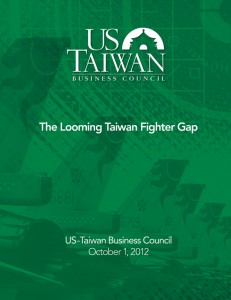
Lessons and experiences from previous Taiwan Strait crises have shown that it is imperative for Taiwan to maintain a measure of qualitative superiority over China – not only to attempt to prevail in conflict, but also to reinforce deterrence, to allow Taiwan to negotiate from a position of strength, and to prevent war. However, a careful and objective analysis of the current balance of air power in the Taiwan Strait reveals that Taiwan’s current air defense forces are only marginally capable of meeting the island’s air defense needs, and that it faces real and significant future challenges in maintaining its current capabilities.
The U.S. decision in 2011 to assist Taiwan with the mid-life upgrade (MLU) of its existing fleet of F-16A/B fighters will significantly improve Taiwan’s air defense capabilities. Nevertheless, the upgrade program still does not adequately address all of Taiwan’s legitimate air defense requirements. Without additional procurement programs, a tangible and substantial front-line fighter gap will develop in Taiwan within the next five to ten years, as a significant portion of the Taiwan Air Force (TAF) aircraft inventory reaches the end of its useful service life.
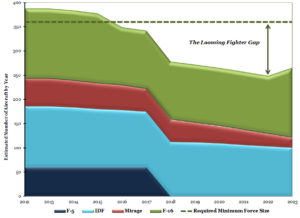
Taiwan’s fleet of Mirage 2000s and the F-CK-1A/B Indigenous Defense Fighter (IDF) both contend with serious availability issues, and may be facing retirement after 2018. The shortfall in front-line fighters will be further exacerbated by the rapidly approaching obsolescence of Taiwan’s fleet of F-5 Lead-In Fighter Training (LIFT) aircraft. Together, this will reduce the Taiwan air defense force structure to rely primarily on a small fleet of 145 F-16A/Bs whose operational rate takes the number of available planes to approximately 107. During the scheduled upgrade program for these fighters, however, as many as a squadron (24) at a time of F-16A/Bs will be unavailable for service, further reducing Taiwan’s air defense forces.
By 2023, at the expected end of the upgrade program, Taiwan’s operationally-available fighter strength will have declined to a point where the TAF will no longer possess the minimum requisite number of combat aircraft necessary to defend its air space from Chinese aggression or military coercion. Moreover, the quantitative shortfall is certain to also erode the quality of Taiwan’s air force, manifesting in decreased aircraft performance, reduced pilot training opportunities, and lack of pilot experience.
This significant air power shortfall will emerge in Taiwan while China continues to aggressively modernize and expand its missile strike capabilities, and while the People’s Liberation Army (PLA) is simultaneously and rapidly introducing modern combat aircraft into service in large numbers.
The United States has both a clear legal and moral obligation to respond to the ongoing Chinese intimidation tactics and attempts at coercion of Taiwan. Under the Taiwan Relations Act (TRA), Washington must ready itself and Taiwan to resist that coercion. The germane parts of the TRA make it the policy of the United States:
- to consider any effort to determine the future of Taiwan by other than peaceful means, including by boycotts or embargoes, a threat to the peace and security of the Western Pacific area and of grave concern to the United States;
- to provide Taiwan with arms of a defensive character; and
- to maintain the capacity of the United States to resist any resort to force or other forms of coercion that would jeopardize the security, or the social or economic system, of the people on Taiwan.[1]
Arguably the mere existence of China’s current large arsenal of ballistic missiles, land attack cruise missiles (LACMs), and fighter aircraft opposite Taiwan is “a threat to the peace and security of the Western Pacific,” as it is undermining the long-standing, stability-enhancing military balance in the region. Clearly targeted at Taiwan, China’s standing arsenal is certainly a means of coercion even if the missiles and aircraft are never used.
The United States and Taiwan need to craft and implement counter-coercive strategies that undercut the utility of Chinese aerospace power, while demonstrating Taiwan’s ability to defend its airspace in peacetime and wartime.
Graphic: Report Cover
Graphic: The Looming Taiwan Fighter Gap
The US-Taiwan Business Council congratulates the governments of the United States and Taiwan on their recent signing of a US$3.8 billion Letter of Offer & Acceptance (LOA) to upgrade Taiwan’s 145 F-16 A/B fighters. This deal will provide Taiwan’s existing fleet of F-16 A/Bs with important enhancements by means of a contract spanning nearly a decade of work (2012-2021). The agreement provides for Taiwan adding advanced Active Electronically Scanned Array (AESA) radar to its fighters, as well as for making structural upgrades, improving avionics, and expanding electronic warfare suites.
The future boost in Taiwan’s airpower capabilities represented by this LOA was a long time in coming. It would not have happened without the leadership of Senator John Cornyn. As a result of the Senator’s perseverance, the Obama Administration notified to Congress a US$5.3 billion F-16 A/B upgrade program in September 2011. In the absence of Senator Cornyn’s personal attention to this important Asia Pacific security matter, it is likely that the upgrade program LOA would not have been consummated last Friday, July 13, 2012.
Despite this positive development, however, Taiwan’s very real and urgent requirement for additional fighters remains unaddressed.
Taiwan & the U.S. Re-Balance Towards Asia
The Obama Administration is currently paying increased attention to the Asia Pacific region, and has undertaken a significant effort to highlight its “Pivot to Asia” and its re-balancing of priorities. This is welcome news.
In the context of this re-balancing effort, moving ahead with the F-16 A/B upgrade program is an important initial step in Taiwan’s effort to play its role in the region. However, Taiwan’s requirement to also purchase new fighters is just as serious and urgent as the U.S.-supported modernization programs for Australia, Singapore, South Korea, and Japan.
It is important to clearly understand the grave issues faced by Taiwan’s air forces after 2016. In the latter part of that year, the Taiwan Air Force will start to withdraw up to a squadron (24) at a time of F-16 A/Bs to undergo upgrades and modernization. With 16 fighters permanently allocated for training at Luke Air Force Base, and with an operational rate of 70%, Taiwan will then have as few as 73 F-16 A/Bs operational at any one time – half of its existing fleet. In addition, these remaining fighters will not yet have been modernized, and will be required to fly more missions to attempt to maintain control over Taiwan’s myriad defense and security scenarios. This is simply not enough to handle all of Taiwan’s many needs, whether at war or while at peace.
What is the Plan to Fill Taiwan’s 2016-2021 Fighter Gap?
In an April 27, 2012 letter to Senator Cornyn, the White House stated that it is “mindful of and share your concerns about Taiwan’s growing shortfall in fighter aircraft.” The letter also noted that the Obama Administration is deciding “on a near term course of action on how to address Taiwan’s fighter gap, including through the sale to Taiwan of an undetermined number of new US-made fighter aircraft.”
This important language should be at the center of the next stage of Taiwan’s air force modernization. Neither the U.S. nor Taiwan has the luxury to take several years to determine what to do next. The two governments need to settle on a plan in the coming months, a plan that can be implemented so that while Taiwan’s F-16 A/Bs are being withdrawn from the front line in 2016 and beyond, new fighters are available to fill the gap. This plan could be as simple as a phased approval approach. Phase I could be for a small number of new F-16s (24) to compensate for those existing aircraft out of service during the upgrade program. These new aircraft could be delivered in parallel with the upgrade/modification schedule.
There are some who argue that the F-35B – the short take-off and vertical landing (STOVL) variant of the new U.S. fighter – should be the focus of Taiwan efforts to modernize its fighter fleet. In 2011, press reports indicated that a U.S. Department of Defense report to Congress highlighted a STOVL aircraft as the best solution for Taiwan.
Certainly a STOVL variant would meet many of Taiwan’s needs, and if it was available that could be an attractive option. However, the F-35B will certainly not be made available to Taiwan in the next decade. It therefore fails to meet Taiwan’s fighter gap needs between 2016 and 2021. In addition, the F-35B is significantly more expensive than the F-16 C/D – it represents a new airframe and therefore a new supply chain to keep it operational through training, upgrading, and maintenance. The F-35B would therefore create even greater budgetary pressures for Taiwan’s already under-funded defense establishment.
The US-Taiwan Business Council welcomes the signing of the F-16 A/B upgrade and modernization contract this past Friday. Nevertheless, this action does not offer a complete solution. Indeed, removing F-16 A/Bs from the front line to be upgraded actually makes Taiwan’s 2016-2021 fighter gap that much wider. Taiwan will not have enough fighters to patrol its skies.
The Council urges the U.S. & Taiwan governments to put a plan in place as soon as possible to address this destabilizing shortfall.
Special Commentary: Signing of an LOA to Upgrade Taiwan’s F-16 A/B Fighters
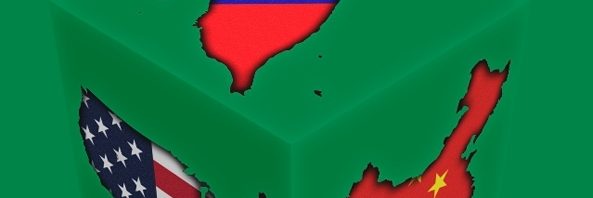
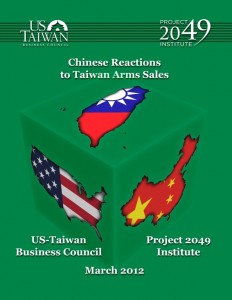
Taiwan’s national security is fundamentally in the national interest of the United States, and the U.S. seeks to create an atmosphere conducive to a peaceful and non-coercive resolution of political differences on the two sides of the Taiwan Strait.
U.S. arms sales are intended to provide Taiwan’s government and leadership with the confidence needed to engage with their counterparts in Beijing from a position of strength. Guided by the Taiwan Relations Act, and consistent with understandings outlined in Joint Communiqués with China, America providing to Taiwan the arms necessary to ensure its own self-defense has enabled democracy to flourish on the island. Substantial support for Taiwan has also served as a visible reminder of U.S. commitments to peace and security in the Asia Pacific.
The process by which U.S. policymakers have addressed Taiwan’s defense requirements has evolved over time. When the Mutual Defense Treaty guided the relationship, between 1955 and 1979, Taiwan was treated as an ally. After the shift in diplomatic relations in 1979, Taiwan was treated as a special case. Concerned over possible Chinese intervention, Taiwan defense officials traveled to Washington to present senior U.S. policy officials with Taiwan’s bundled list of requirements in annual face-to-face meetings. Formal Congressional notifications of approved items were forwarded both relatively frequently and as needed throughout the course of a given year.
In 2001, the annual Taiwan arms sales talks process was discontinued, with the intention of allowing Taiwan’s defense requirements to be addressed at any time during the year, similar to the process for a normal security assistance partner. Since 2008, however, Congressional notifications of approved items have consistently been bundled into large multi-billion dollar packages, rather than being processed when ready. A return to the annual arms sales talks process may warrant consideration.
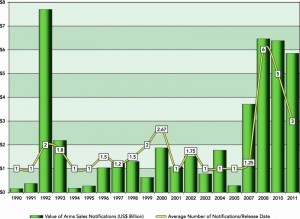
China has a well-established track record of responding negatively and stridently to public announcements of U.S. arms sales to Taiwan. Congressional notifications will likely remain the primary trigger for Chinese responses, rather than earlier decision-points in the process such as providing Price and Availability (P&A) data in response to a Letter of Request (LOR) from Taiwan.
Future Chinese actions taken in response to Taiwan arms sales may include sanctions against the U.S. companies that are supporting Foreign Military Sales (FMS) programs or undertaking Direct Commercial Sales (DCS) programs with Taiwan. However, the effectiveness of such sanctions is open to question, as major U.S. defense industrial firms conduct only minor business in China. Beijing is also unlikely to sanction smaller sub-system suppliers due to their peripheral involvement as sub-contractors and their marginal value as symbolic targets. In addition, if a U.S. company were to face discrimination as a result of Chinese sanctions due to Taiwan arms sales, a case could be introduced to the World Trade Organization (WTO) for adjudication.
Beijing authorities could suspend People’s Liberation Army (PLA) military exchanges with the U.S. Department of Defense in response to Taiwan arms sales – an often-used tactic. While such exchanges have value, critical issues in the bilateral security relationship would be addressed through other channels if necessary. In addition, the PLA most likely would resume exchanges again, following an appropriate interval, as they have in the past.
In retaliation for Taiwan arms sales, PRC leaders could also consider releasing sensitive nuclear or missile-related technologies to Iran or other countries of concern, or they could withhold support for non-proliferation-related actions within the United Nations or other international organizations. However, reprisals from the U.S. or from other concerned countries could be expected in return, and Beijing likely would also be subject to criticism from other players in Europe and elsewhere who have significant interests in preventing Iran from gaining weapons of mass destruction.
Political or military leaders in Beijing may attempt to retaliate by liquidating U.S. Treasury holdings. As satisfying an emotional outburst as this course of action might be on an individual basis, the PLA has limited authority over national Chinese economic and financial policy. A sudden sell-off of U.S. Treasury holdings would be a significant horizontal and vertical escalation of the relatively minor, albeit emotionally charged, issue of Taiwan arms sales. In addition, the effects of such an action are unclear and could actually have a greater negative effect on China’s economic interests than on the interests of the U.S.
Past behavior indicates that China is unlikely to challenge any fundamental U.S. interests in response to any future releases of significant military articles or services to Taiwan. The U.S. therefore retains considerable freedom of action in abiding by the Taiwan Relations Act. Barring a substantive reduction in the Chinese military posture opposite Taiwan, the U.S. will likely continue to provide Taiwan with weapons of a defensive character for the foreseeable future.
Nevertheless, key unresolved issues include Taiwan’s unheeded request for additional F-16 fighters, and the fact that the Bush administration’s 2001 commitment to assist Taiwan in its acquisition of diesel-electric submarines remains unfulfilled. Taiwan’s request for additional F-16s is both reasonable and urgent, and should be honored. In addition, if Congressional notification for a submarine design program is not forthcoming, Taiwan’s LOR should be withdrawn and export licenses through direct commercial sales channels should be given positive treatment.
The Barack Obama administration has demonstrated unnecessary restraint in its Taiwan arms sales decisions to date, despite having ample justification for positive considerations. Excessive caution on new arms sales to Taiwan risks legitimizing PRC use of military coercion to resolve political differences with its neighbors and sends a signal to others in the region of a diminished U.S. commitment in Asia.
This major report examining Chinese reactions and retaliatory responses to Taiwan arms sales by the U.S. is available on the US-Taiwan Business Council website:
Report: “Chinese Reactions to Taiwan Arms Sales” (PDF, 2.18MB)
Graphic: Report Cover
Graphic: Value of Arms Sales Notifications, 1990-2011

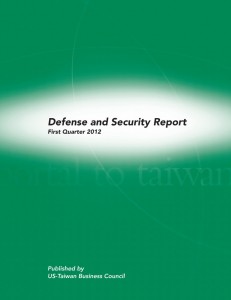
The year 2012 began with presidential and parliamentary elections in Taiwan, and the results will help shape the trilateral relationship between Taipei, Beijing and Washington over the next four years.
Despite his stronger-than-expected showing at the polls as he was re-elected, President Ma Ying-jeou has already begun struggling with rapidly falling popularity. Ma has also seen widespread public resentment over some difficult policy decisions – decisions that he had declined to make before the presidential election, but that he felt compelled to push forward during the period between the election and his formal inauguration in May. It remains to be seen whether this signals the shape of things to come during Mr. Ma’s second term, and how his weak political standing could impact his cross-Strait and national security policies going forward.
This quarterly analysis report will provide a brief overview of significant defense and national security developments in the past few months, and will examine some of the factors that influenced the course of events during the first three months of 2012. It will examine the political environment in Taiwan, assess cross-Strait relations, look at Taiwan defense policy and defense budget issues, and appraise the status of the U.S.-Taiwan defense relationship. The report ends with an update on the current state of affairs for select Taiwan procurement programs.
Election politics and considerations dominated the year 2011 for Taiwan in almost every conceivable way. The January 14, 2012 Presidential/Legislative Yuan (parliamentary) elections were watched not without some anxiety by interested entities well beyond Taipei. Indeed, some of the actions taken by Washington and Beijing during the past year, and in the lead-up to the elections, may even suggest the emergence of a preliminary consensus – if not yet a new paradigm – for managing the complex and often sensitive U.S.-Taiwan-China strategic relationship.
As these critical elections were successfully concluded within two weeks of the end of 2011, this report will try to analyze their results in the context of the traditional defense and security focus of this annual review. The report will also provide an overview of the significant political, cross-Strait, and defense developments during 2011, which should perhaps offer some helpful indications as we look for factors that could influence key defense and national security policy developments during the next four years.
